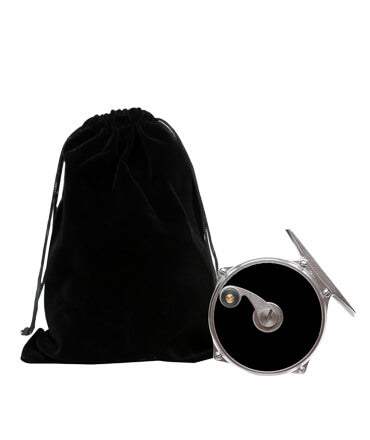Fly Line: Top Choices for Scandinavian Fly Fishing and Scandi Casting
As an avid fly fisherman, I've discovered that the right fly line can significantly enhance my casting technique and overall success on the water. When it comes to Scandinavian style, the Scandi casting fly line is a game changer, providing a smooth and efficient way to present flies to trout and other species. This style of line excels in versatility, allowing for precise casts even in challenging conditions.

In my experience, the best Scandi fly lines are crafted to optimize performance, whether I'm fishing in lakes or rivers. These lines typically offer a compact weight distribution that facilitates quick loading of the rod, which is essential for effective casting. Considering the unique demands of trout fishing, selecting a Scandi fly line tailored to these needs can make a noticeable difference in my success rate.
Exploring different options has led me to realize that not all fly lines are created equal. Understanding the features that make Scandi fly lines suitable for trout fishing will help me choose the best one for my next outing. The right line not only improves my casting but also enhances my overall fishing experience.
Fundamentals of Scandinavian Fly Lines

In my exploration of Scandinavian fly lines, I focus on their distinct features and the key differences from other fly line types. Understanding these fundamentals helps enhance casting techniques and fishing success.
Differentiating Scandi, Skagit, and Spey Lines
Scandi lines are designed for precision casting, specifically for light to medium sink tips and smaller flies. They have a longer front taper that aids in smooth delivery and accurate placement. This makes them particularly effective in conditions where finesse is required.
In contrast, Skagit lines excel in casting heavier tips and larger flies, using a short front taper. Their design allows for quick loading of the rod, ideal for generating power in tight spaces. Spey lines share similarities with Scandi lines but typically accommodate two-handed rods for longer casts in larger waters.
Key Characteristics of Scandi Lines
Scandi lines feature a balanced taper profile that aids in achieving smooth and accurate presentations. The long front taper provides a gentle transition from the fly line to the leader, minimizing drag while allowing for delicate presentations.
The rear taper is crucial as it aids in controlling the line during casting. Scandi lines often incorporate a running line that maintains minimal drag in the water, further enhancing casting efficiency.
Lengths usually range from 30 to 40 feet, allowing for adaptability in various fishing scenarios. This versatility makes Scandi lines ideal for targeting trout and other species in diverse environments.
Casting Techniques and Applications
Mastering casting techniques is essential for effectively using Scandinavian fly lines. These methods can enhance precision and distance while accommodating various fishing scenarios.
Scandi Casting Essentials
Scandi casting focuses on creating a D-loop, which is vital for generating power in casts. I find that maintaining a balanced stance improves my stability during the casting motion. The key steps include lifting the line off the water, forming the D-loop behind me, and executing a forward cast.
For easy casting, keeping the rod high in the D-loop phase allows for a smooth transition into the forward motion. Practicing different angles can help me adapt to various conditions. Incorporating snap-T and circle casts can also be beneficial, enabling me to quickly change casting direction without requiring significant backcasting space.
Deploying Scandi Lines for Various Fishing Situations
When I encounter different fishing situations, adapting my casting technique is crucial. For overhead casting in open water, I focus on longer strokes and a more extensive D-loop to achieve maximum distance. In tight quarters, such as brushy riverbanks, I often rely on roll casts, which allow me to place my fly accurately without extensive backcasting.
Using Scandi lines for trout fishing, I adjust my retrieve speed and line angle to target specific depths. Changing from a floating to a sink-tip line may enhance my success in deeper runs. Each technique offers unique advantages, allowing me to adapt to the conditions and maximize my catch potential.
Selecting the Best Scandi Fly Lines
When choosing a Scandi fly line, I focus on several key factors, including grain weight, line type, and performance in various fishing conditions. The right line allows for effective casting and enhances my overall fishing experience.
Top-Rated Scandi Fly Lines
Among the best options, I find the Airflo Scandi Compact and Rio Scandi Lines to be outstanding. These lines feature a unique profile that aids in smooth casting and presentation.
- Airflo: Known for their durability and minimal line memory, they perform well in various conditions.
- Rio: Offers versatility with various sink tip options, ideal for different depths.
Both brands provide excellent floating lines and sinking tips tailored for salmon and steelhead fishing.
Scandi Lines for Salmon and Steelhead
When targeting salmon or steelhead, I prefer using lines specifically designed for these species. Sinking tips are particularly beneficial for deeper waters, while floating lines excel in shallower river sections.
- I often pair my Scandi lines with poly leaders or versileaders, which provide adaptability.
- Adjusting grain weight is crucial; I typically opt for a heavier weight when fishing in fast currents or turbulent water.
Evaluating local conditions helps in determining the best setup for maximizing my catch.
Choosing the Right Grain Weight for Fishing Conditions
Grain weight plays an essential role in how well a Scandi line performs. The correct weight ensures optimal casting and presentation of the fly.
For instance, in faster water, I use a line with a heavier grain weight to ensure it sinks quickly.
Conversely, lighter grain weights work well in slower-moving water.
To further refine my selection, I consider the following:
- Fishing conditions: Fast, turbulent waters require a heavier line.
- Personal casting style: My ability to cast influences whether I choose lighter or heavier options.
Matching grain weight to my specific conditions helps improve my fishing success significantly.
Advanced Scandi Fly Line Tips for Specific Species

When using Scandi fly lines, applying specific techniques can significantly enhance your fishing success. I will outline targeted strategies for trout, tackle saltwater challenges, and the best practices for using streamers.
Trout Fishing with Scandi Lines
For trout fishing, I prefer using lighter Scandi lines, which allow for delicate presentations. This is essential when targeting finicky trout, especially in clear water.
Using small flies or dry flies is advantageous, as they create less disturbance. I often adjust the leader length to around 9-12 feet to give flies a longer drag-free drift.
Additionally, consider varying your retrieve speed. A slow, steady pull often entices trout, particularly in colder months. When conditions dictate, heavy flies can effectively penetrate the water column to reach deeper fish.
Adapting to Saltwater Challenges
In saltwater environments, I focus on heavier Scandi lines that can handle wind and surf conditions. These lines offer better control and longer casts when targeting species like pike or bass.
Utilizing artificial streamers is a key tactic. These larger, more visible flies attract aggressive saltwater species. I recommend a beefier leader, around 16-20 pounds, to withstand sharp teeth and abrasive structures.
It's crucial to be mindful of the tide and current. Timing my casts to align with natural baitfish movements increases my chances of success.
Targeting Species with Streamers and Flies
I find that using Scandi lines to present streamers effectively targets various species, including trout and bass. My approach often includes a mixed strategy, alternating between fast and slow retrieves. This mimics the erratic movement of injured prey.
When using heavy flies, such as large articulated streamers, I increase the sink rate, making it easier to reach the desired depth. In shallow water, I prefer to use lighter patterns that create a more subtle approach.
Selecting the right color and size is vital. I often experiment with different combinations until I identify what triggers the fish's interest on a particular day.











